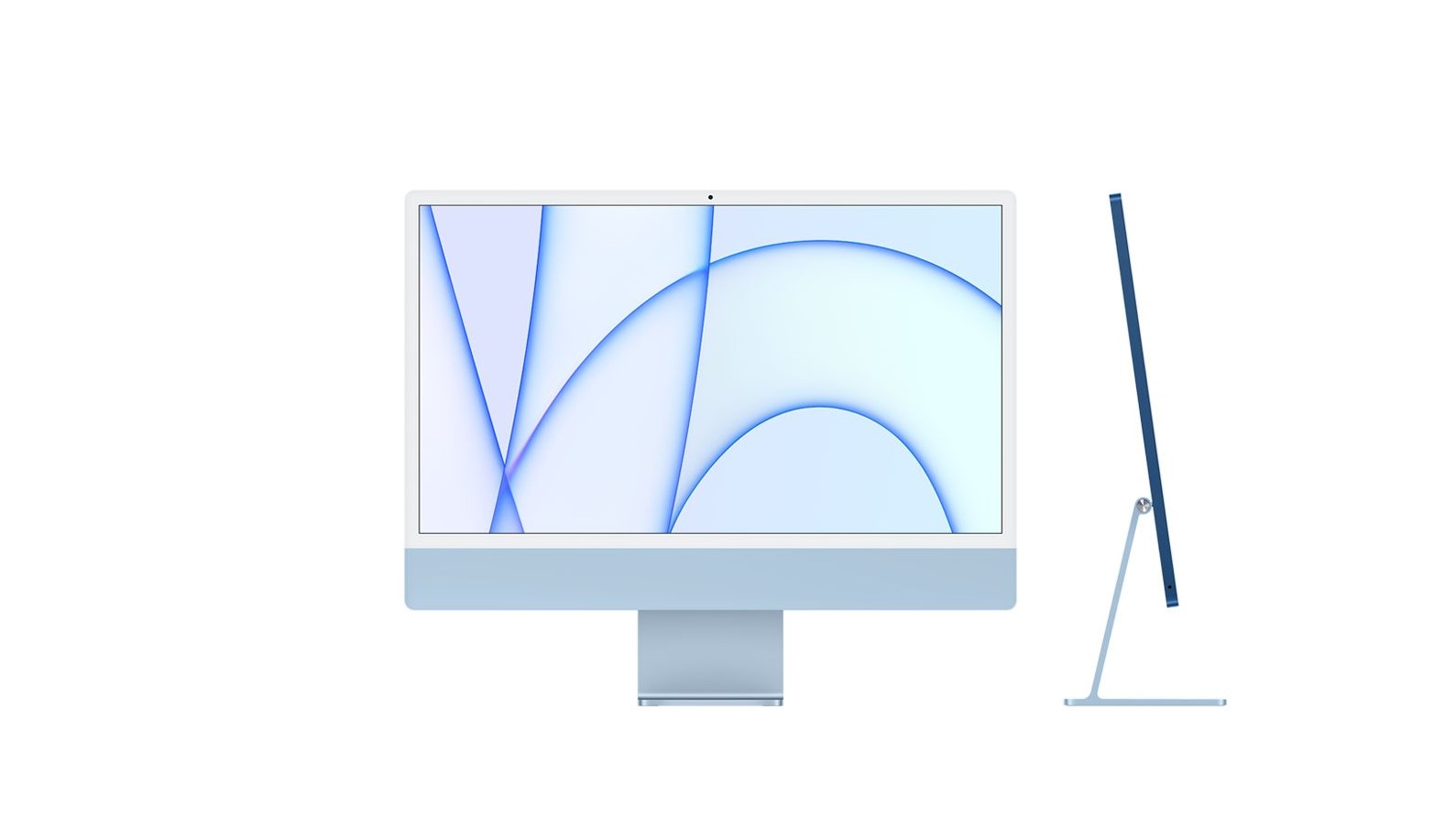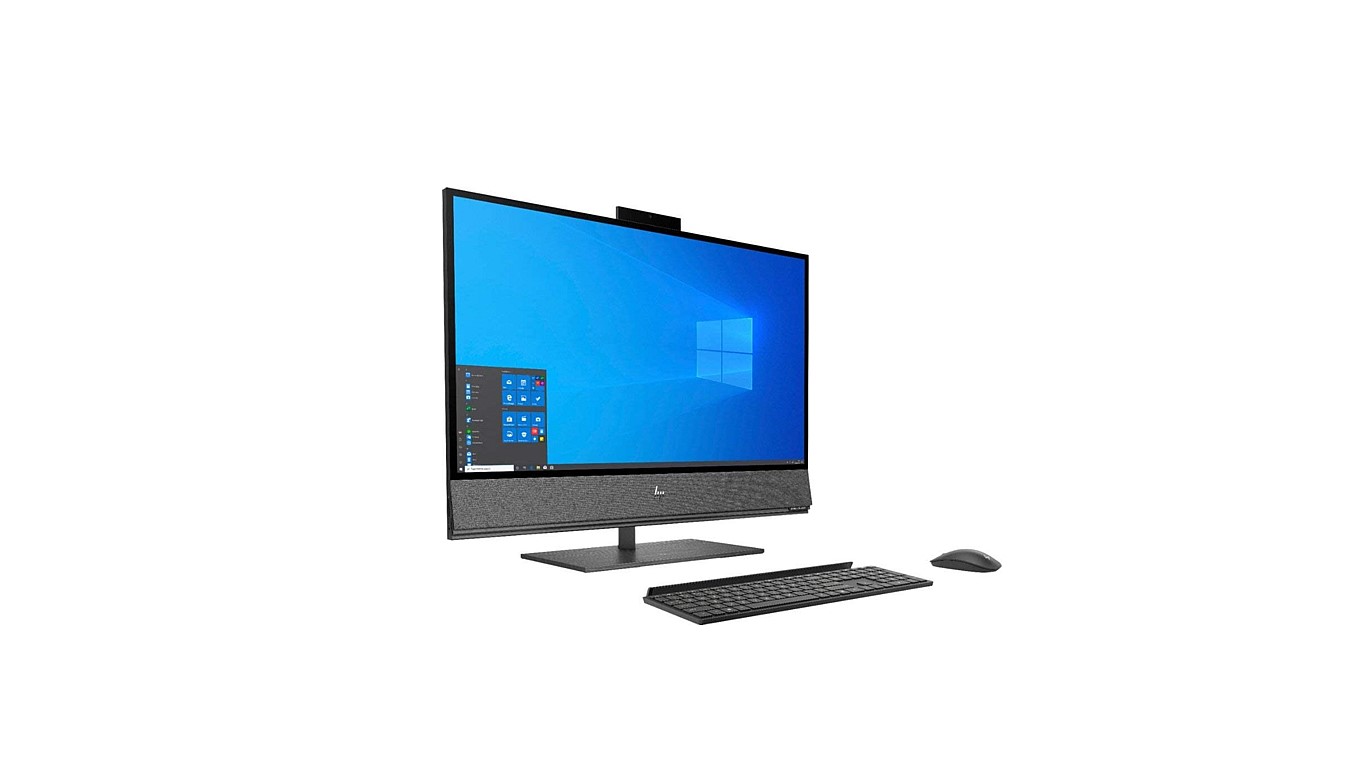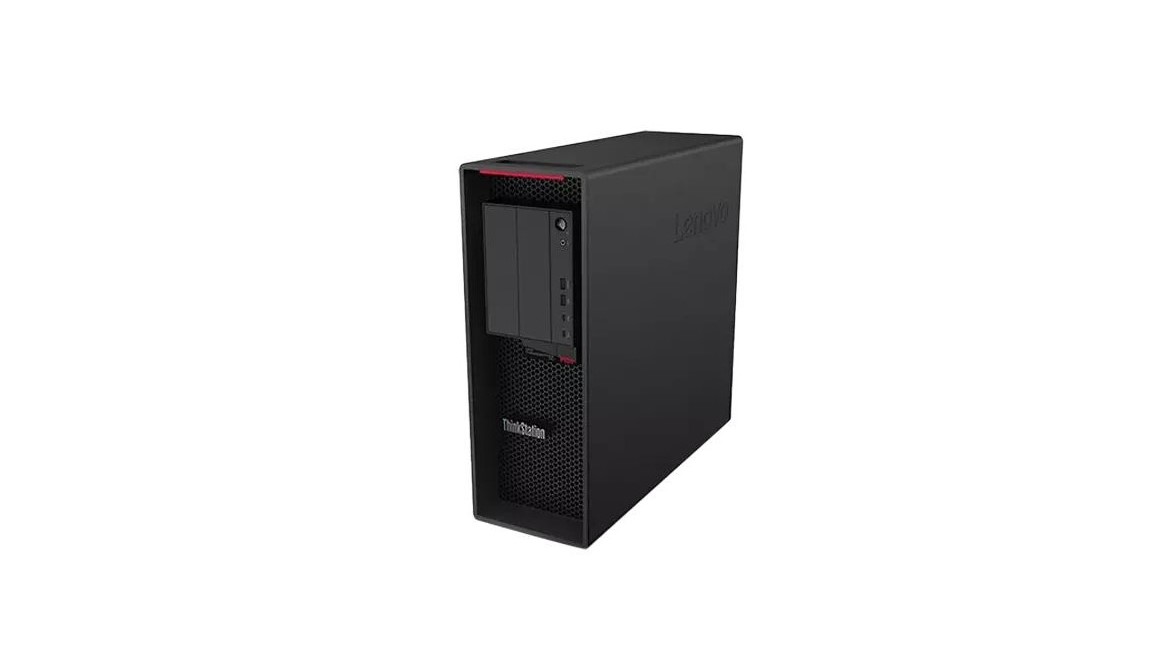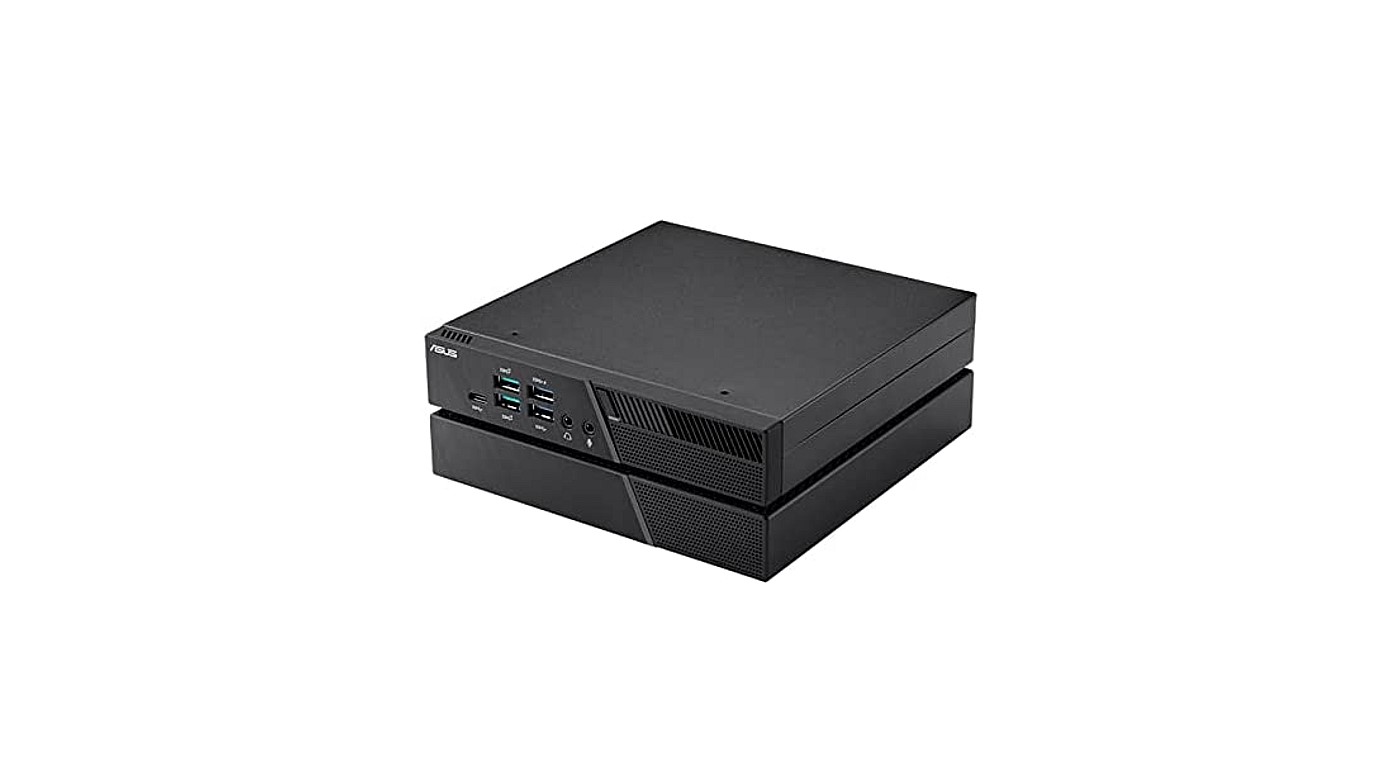Best Video Editing Software for Pc in 2019
Best video editing computer 2021: the top PCs for editors and producers
Included in this guide:

The best video editing computer needs a whole lot of power. There's simply no way around this. While small compromises can be made here and there – you can, for example, make minor design changes and take away features that aren't vital when you're putting clips together or running the most taxing of video editing software with ease.
However, in terms of the components inside, only a PC with powerful enough internal components will do: the longer and higher resolution your video will be, the more power you need. That means that to edit videos and render very large files, you'll need one of the best video editing computers. That sheer performance will shave a lot of time off your process, and help you focus more on your creative workflow.
What does that mean exactly? Essentially, it will depend on which video editing software you use, but you'll want something with a powerful discrete graphics card, plenty of fast RAM, and a multi-core processor inside, so it can see you through more complex editing tasks.
We've rounded up the very best video editing computers out there for a range of budgets. And, with our built-in price comparison tool to ensure you get the best deals, you'll find one that gets the best value for your money.
While many technologists may prefer to build their own system with high-end processors from AMD and Intel, the busy worker and professional will enjoy purchasing a plug and play solution that just works from minute one, with technical support and overall system warranty. From the available options we would suggest having a PC from HP, or desktop workstation from Lenovo, or systems from Dell, ASUS, or an Apple all-in-one. Those with extreme portability needs or little desk space have an option from Minisforum.
What to look for in a video editing PC
In recent years, laptops have become more popular thanks to advances in mobile graphics and display technologies, but they cannot compare to a standard desktop computer with regards to expandability and upgradeability.
Most video editing software depends on the CPU; multiple cores and with powerful graphics are necessary to edit effectively. Video editing apps are also heavyweight in terms of memory usage, so the more the better. The operating system should have a solid state drive (SSD) so the operating system and applications load and run quickly. Since speedy USB 3.2 ports are ubiquitous, using an external disk for final work storage is no longer as much of a pain as it once was. This has widened the options from full size workstations to compact offerings with fewer internal storage bays.
How we selected the best video editing PC
To work with heavyweight video editors like Adobe Premiere you will need 16GB of RAM to plod away comfortably, although technically it can run with just eight. A fast discrete GPU -if available- will also help as once you get past simple chopping of footage and start involving transitions, overlays and other fancy effects. Adobe Premiere and DaVinci Resolve are optimised to offload encoding from the main CPU to the video card´s GPU.
Fast storage is also essential. Luckily, most systems nowadays come with SSDs to quickly load the operating system and applications. Having a secondary, old-fashioned spinning disc hard disk drive (HDD) as a secondary storage medium for your final work exports is a huge bonus, so we focused on systems that either come with 1TB or more of secondary storage or which can be easily expanded with additional HDDs internally.
We present you options from a wide range of prices. If you are on a budget, a good rule of thumb is to keep the internal storage modest and purchase the largest external HDD or flash drive that you can buy. And if you value your work, we recommend you add a Network Attached Storage (NAS) unit for local backup purposes. And if your income depends on such work, make it a NAS with RAID for data redundancy and disaster recovery.
Given the requirements, we selected systems with 16 gigabytes of RAM and fast 8-core processors like Intel´s i9, and AMD´s Ryzen 9 when available in each given device's form factor. Future expandability and upgradeability was also considered as a bonus.
The best video editing computer at a glance
- HP Omen 30L
- iMac (24-inch, M1, 2021)
- Dell Precision 3650
- HP Envy 32
- Lenovo Thinkstation P620
- Lenovo Thinkstation P340 Tiny
- Asus PB60G Mini Business PC

Best overall: Made for gamers, great for video
Specifications
CPU: Intel Core i9-10900K
Graphics: NVIDIA GeForce RTX 3080 (10GB DDR6X)
RAM: 32GB DDR4-3200 SDRAM (expandable to 64 GB)
Communications: Gigabit Ethernet, WI-FI (802.11 AC or WiFi 6)
Dimensions (W x D x H): 16/51 x 42.19 x 43.3cm
Reasons to buy
+Great CPU and GPU for video editing +Good value for the money +Elegant looks and standardized parts
Reasons to avoid
-Limited cooling options -CPU fan is noisy -USB-C port in the back
Gaming PCs are well suited for video editing as games are resource-intensive in terms of CPU, RAM and GPU. HP's Omen 30L is a sleek PC with pleasant aesthetics that packs some seriously fast components into a narrow and elegant chassis. Its semi-transparent tempered glass side panel shows them off while allowing access to the components without using tools.
Since this is a consumer PC you pay a fair value rather than the premium price of a workstation. We choose the version with an Intel Core i9-10900K with ten cores running at 3.70GHz and a hefty 32GB of RAM -more than double the Adobe Premiere recommended system specs. During benchmarks this system enjoys a sustained boost clock around 4.9GHz. It's fast PCIe SSD coupled with a speedy 2TB 7,200 RPM hard drive give plenty of space for working with 4K video. Other configurations can be found at retail, like one with a 2TB SSD plus 2TB HDD with 64 GB RAM.
Expansion is easy thanks to its array of USB ports -two of them USB 3.2 Gen 2 at 10Gbps. Our one complaint though is that the USB-C port is tucked in the back. Videographers will appreciate its HDMI port, useful for hooking up a large-screen TV in addition to DisplayPort for a monitor. Those needing LAN speeds above Gigabit Ethernet might need a 2.5Gbps or 5Gbps USB 3.x to Ethernet adapter.
Read the full review: HP Omen 30L

Best for Mac users: Apple's latest iMac is a lean video editing workhorse
Specifications
CPU: Apple M1 - 8 cores, 2 efficiency cores
Graphics: Apple M1 8 Core GPU
RAM: 16 GB (Maximum,not upgradeable)
Storage: 1TB SSD (2TB Max)
Dimensions: 46.1 x 54.7 x 14.7cm
Reasons to buy
+Gorgeous 24-inch, 4.5K Retina display +Video editing apps are already optimised for M1
Reasons to avoid
-Limited to 16 GB RAM -Only supports one external monitor -You edit video above 4K
If you are a Mac user that couldn't touch a Windows system even with the proverbial ten foot pole and you can't shell out $6k on a Mac Pro tower, this is a perfect system for mastering professional video editing software, especially after Apple axed its Intel-based, large-screen iMac Pro earlier this year.
The new iMac performs as well as any M1 Mac when editing videos, which means it does so quite well. In combination with a crisp, colorful Retina display exceeding 4K resolution, Apple has packed it all into an incredibly thin package sure to make Apple fans watery-eyed. However, don't expect the same expandability and performance as an expensive Mac Pro tower because this M1 is not in the same league, even while Adobe claims its M1 optimized Premiere Pro editor performs "80% faster on M1 than comparable Intel-based Macs".
For any serious video editing you need to skip the entry level iMac and go straight to the top configuration: 1TB or more of SSD storage and 16GB of RAM. Which brings us to the limitations of this system: 16GB of RAM is as high as you can get and 2TB is the maximum internal storage possible.
When it comes to expansion, it features an austere number of ports: four USB Type-C (not Thunderbolt, no video output) while the Gigabit Ethernet port has been moved to the external power brick. These facts will make professionals stick to their Mac Pro towers until Apple comes out with an M1 Pro based replacement. For everyone else, the higher-end M1 iMac is a great video editing system.
Read the full review: iMac (24-inch, M1, 2021)

3. Dell Precision 3650
Best for power users: A silver bullet for video professionals
Specifications
CPU: Intel Core i9 11900K, 3.5GHz (5.3 GHz turbo), 8 cores
Graphics: NVIDIA Quadro RTX 4000 (8 GB)
RAM: 64 GB 3,200MHz DDR4 UDIMM (2x32)
Storage: 2TB SSD (M.2) + 8TB HDD (3.5" SATA)
Dimensions: 17.6 x 34.5 x 35.5cm
Reasons to buy
+Next Business Day Onsite Service +Three year warranty +Sturdy build, quality components +Four internal SATA bays
Reasons to avoid
-Pricey -Can't have both 10G Ethernet and Thunderbolt 4
Launched in May of this year, Dell calls the Precision 3650 an "entry-level desktop workstation". However, this is a mistake as it is a beast of a workstation very well suited for video editing professionals. It's available direct from Dell configured to your tastes, supporting 11th Gen Intel Core or Xeon W-1300 processors (up to eight cores). It can be expanded to 128GB of memory, PCIe Gen 4 SSDs, your choice of 7200 rpm SATA hard drives, and your choice of Nvidia or AMD graphics cards.
For video editing, we selected the biggest system the configurator would allow while keeping price within reason: an Intel Core i9-11900K with eight cores, an NVIDIA Quadro RTX 4000 graphics card with 8GB VRAM. Then we added a 2TB SSD and an 8TB 7200rpm SATA hard drive. Finally we added the optional Thunderbolt 4 PCI adapter for ultimate expandability besides its four 2.5-inch SATA drive bays.
Gigabit Ethernet is included and you can upgrade it to 10Gb Ethernet or 5/2.5 Gbit by adding an Intel NIC or a Quantia Aqtion NIC. Neither are cheap. Additional output ports can be configured too: e.g. an additional DisplayPort 1.4, or a USB Type-C with DisplayPort, or a HDMI 2.0 port and all will cost you $17.44 each.
It's really hard to find a flaw or limitation in this beast of a workstation but we did. If you choose any of the additional higher-than-Gigabit network cards, you lose the ability to add the Thunderbolt 4 controller due to the number of spare PCIe slots. So, caveat emptor.

4. HP Envy 32
Best all in one: Workstation power in an all-in-one format
Specifications
CPU: Intel Core i9-9900K (3.60 GHz, 8 cores)
Graphics: NVIDIA GeForce RTX 2080 (8 GB VRAM
RAM: 32GB
Storage: 1TB SSD (PCIe)
Communications: Gigabit Ethernet, Wi-Fi 6
Dimensions (W x D x H): 86.1 x 17.8 x 52.3cm
Reasons to buy
+Large 4K screen +Thunderbolt support +Loaded configuration
Reasons to avoid
-Expensive -Ports in the back can be hard to reach -Not ideal for moving around
If you took a 27-inch iMac Pro and replaced its internals with a top of the line Windows PC what would you get? Probably something like the HP Envy 32, but with a smaller screen and some features missing from HP's mind-blowing all-in-one PC, the aptly named Envy.
While many all-in-one PCs use the same internals as a laptop, HP has decided to go with a desktop-level, eight-core Intel i9-9900K plus a Nvidia GeForce RTX2080 GPU plus 32GB of memory, making this system an ideal video editing beast. We selected the version with just a 1TB SSD but you can also find it in a 1TB SSD plus a 2TB HDD. According to published reports, the Geekbench 5 results put this system's performance 9% above the M1 silicon in the Mac Mini.
It includes Gigabit Ethernet as well as built-in Wi-Fi 6. At the side you will find one USB-A port and a SD card reader slot. Most of the connectors are in the back of the unit: RJ45 Ethernet, Thunderbolt 3, HDMI-IN to use as display for another PC, or HDMI-Out to hook it up to an external display.
With its big screen there is no need to hook your video editing machine to a large-screen TV to preview results in full 4K resolution and accurate color glory. HP has also packed some tricks up its sleeve like including a Qi wireless phone charger in its stand base. It is a dream on any video editor's desk.

5. Lenovo ThinkStation P620
Best for expansion: Affordable, out-of-this-world performance with plenty of room for growth
Specifications
CPU: AMD Ryzen Threadripper PRO 3955WX (3.9 GHz, 16 cores)
Graphics: NVIDIA Quadro RTX4000 8GB
RAM: 32GB 3200MHz RDIMM ECC (2 x 16 GB)
Storage: 1TB M.2 SSD
Communication: 10GB Ethernet
Dimensions (W x D x H): 16.5 x 46 x 44cm
Reasons to buy
+Three year on-site support +Superb internal design and expandability +TPM 2.0 module for Windows 11 compatibility +Customizable to the max +10Gb Ethernet for blazing fast file transfers
Reasons to avoid
-Can´t wait two months for a custom build -You prefer an all-in-one system -You're a Mac person
The Lenovo ThinkStation P620 is a petite machine, a tad smaller than the average ATX enclosure, yet it packs a modular workstation that will serve you for years with unbelievable amounts of expansion: it can support half a terabyte of RAM distributed over eight 64GB DIMMs, five SATA hard drives, and up to four graphics cards. At its heart is an AMD Ryzen PRO 3955WX, a beast with 16 cores that can go up to 4.30GHz.
Lenovo's attention to details begins to show right from its front handle allowing the movement of the machine effortlessly, and extends to its faultless interior, where you can change or add cards without using a screwdriver.
Lenovo´s online store carries four configurations: for video you want the more loaded configuration (part number 30E1S0FG00) which updates the Ryzen Pro CPU to a 16 cores version and bumps video to a 8GB Quadro RTX 4000. Then the SSD storage jumps to 1TB, a nice bonus for video. You can add extra storage like a beefier 2TB PCIe M.2 SSD at the time of purchase for a small increase in price.
The system's video card exceeds what Adobe recommends for Premiere Pro yet it can be expanded from one to up to four video cards, either dual RTX8000 or four RTX4000 GPUs. Caveat: It has no HDMI or legacy DVI ports, so if you need those, you must purchase adapters, listed on the web site.
As a final pleasant surprise Lenovo's configurator offers Adobe Premiere Elements + Photoshop Elements in a bundle for $100 more. Sold!

6. Lenovo ThinkStation P340 Tiny
Small but powerful: A workstation wonderfully shrunken down
Specifications
CPU: Intel Core i9 10900T (1.90 GHz, (4.50 GHz boost) 10 Cores)
Graphics: NVIDIA Quadro P1000 4GB VRAM
RAM: 32 GB DDR4-2933 (64GB Max)
Storage: 1 TB M.2 PCIe SSD
Communication: Gigabit Ethernet, Wi-Fi 6
Dimensions: 17.7 x 18.29 x 3.5cm
Reasons to buy
+Minimum desk space +Sober, pro design +Ports and Expandability
Reasons to avoid
-No thunderbolt
Lenovo dubs it ¨The industry's smallest workstation¨ and it is. Powered by the deca-core Intel Core i9-10900T Processor that is more than apt for video editing thanks to its discrete GPU -a NVIDIA Quadro P1000 with 4GB of video memory- its ample RAM at 32GB (system supports up to 64GB) and 1TB of fast SSD storage with room for another.
Many might be tempted to go the "Mini PC" route for video editing but as soon as you target a high-end Intel i9 CPU you´ll face either the lack of discrete GPU graphics card or lack of i9 processor as is the case with Miniforum´s PCs or with the Intel NUC11 Extreme which ships as a DIY kit and looks like a mix between a heater and a toaster designed for teens with an engraved skull plus led lights. Lenovo´s offering on the other hand speaks "professional" from every angle.
It measures an impressive 7 inches wide (17.7cm) and it´s thin at 1.4 inches (3.5cm). Of course, if you stack it vertically it takes virtually no desk space due to its 1.4-inch by 7.2 inch footprint. Being an enterprise product shows at it sports security features like an onboard TPM chip and Windows BitLocker to encrypt data and a chassis intrusion switch. Internally it can fit up to two M.2 PCIe SSDs.
Expansion is provided via USB 3.1 ports but sadly no Thunderbolt and it features connectivity via wired Gigabit Ethernet or Wi-Fi 6.

7. Asus PB60G Mini Business PC
Best value: Incredible power in a medium size
Specifications
CPU: Intel Core i9-9900T (2.1 GHz / 4.4 GHz boost, 8 cores)
Graphics: NVIDIA Quadro P620 (2GB VRAM)
RAM: 16 GB (64GB build available)
Storage: 1 TB HDD (1TB SSD + 2TB HDD build available)
Communications: Gigabit Ethernet, Wi-Fi 6
Dimensions (W x D x H): 17.5 x 17.5 x 7cm
Reasons to buy
+Excellent value for the money +Great connectivity options +Support for three 4K monitors +A Plethora of ports
Reasons to avoid
-No Thunderbolt
The Asus PB60 strikes a middle ground between a desktop PC and a Mini PC with some internal components from laptops like SODIMM memory and 2.5-inch HDD bays but with the CPU and GPU power of a desktop. We reviewed a previous model two years ago when it featured an Intel i7 as the highest configuration, luckily it has been updated to this year's standards.
Inside you will find an eight-core Intel i9-9900T 16GB of RAM and a 1TB hard drive with an NVidia Quadro P620, an apt configuration to run Adobe Premiere or your video editor of choice. You can also find a beefed up version with 64GB RAM and storage upgraded to a 1TB SSD plus a 2TB hard drive at reatail. Amazingly, this configuration upgrade will only set you back an extra $500.
It's stackable design resembles two small pizza boxes stack on top of each other. The one at the bottom houses the graphics card. Air vents are located throughout the PC to keep it cool, and Asus provides accessories for mounting your PC either vertically or behind a monitor via a VESA mount.
When it comes to ports, it comes with everything but the kitchen sink: if four USB Type-A ports plus one Type C at the front aren't enough then on the back you'll find wireless antenna connectors, two USB 2.0 ports, a USB 3.1 Gen 2 connector, two HDMI and two DisplayPort ports, Gigabit Ethernet and a user configurable port, which can be VGA.
How do you choose a video editing or rendering computer?
We put this question to James Higuchi, Lighting Supervisor at Monsters Aliens Robots Zombies (MARZ) , a Toronto-based VFX studio.
Nearly every machine for use in production requires its own specifications to meet the needs of the artist using it. For example, editorial requires fast I/O, lots of RAM and now that most editing suites are making use of some form of GPU acceleration, having a decent GPU can go a long way. Lastly, high clock speed CPUs are a must to help keep encoding/transcoding times down. Typically you're going for clocks over cores in this situation.
Rendering is not too dissimilar depending on what application you're rendering in. CPU-based rendering requires as much processing power and RAM as you can fit into a single chassis. Obviously, there is a level of diminishing returns, but I don't think I've ever heard "it has too much RAM."
On the other hand, GPU rendering is dependent almost solely on the specs of the GPU/GPUs in the system and relies on CPU for specific processes (texture processing, compression, I/O, etc). Another consideration for rendering, regardless of the processing unit, is parallelity. Since render processes are typically broken down to a per frame basis, the more frames you can have processing at one time, the better.
So typically we're looking at setups with more cores, more GPUs and more machines in general. At the end of the day, the biggest consideration is cost effectiveness. You could throw $50,000 into a machine that can do everything, but that's just not practical or cost effective.
We typically try to tailor the machine for the task - balancing a mixture of processors (CPU and GPU), RAM, I/O, scratch and static storage depending on the need. This allows us to target the hardware in a more efficient manner and have a more straightforward hardware-upgrade path. It also keeps driver/software overlaps to a minimum, as there are cases in which some driver/firm compatibility conflicts can prevent you from running some processes on the same box.
What are the different types of workstations?
- TechRadarPro Q&A with Anu Herranen, Director of New Product Introduction, Advanced Compute and Solutions at HP Inc .
There are two main categories of workstation: desktop workstations, and mobile workstations. Within both, there will be different levels of performance which is defined by each manufacturer. Mobile workstations typically come in the form of a laptop and are designed for users who need flexibility to work from the office, home or in the field. As the name suggests, desktop workstations are a computer tower on or under a desk, requiring a separate monitor, keyboard and mouse. Although extremely powerful in performance, they aren't portable like a mobile workstation.
There is a third category that people might be less familiar with, and that is the centralized workstation. If you have a team of people, but not all need access to high performance computer power all the time, this can be a very cost-effective option. Say you have a team of 30 people, of which 10 need constant access to workstation performance, you would give them their own workstation. For the other 20, who need it occasionally, you can install a centralized workstation in your office. These are usually stored in IT rooms, rather than sitting on the end user's desk.
This is a rack-mounted desktop workstation that can take care of intensive workflows for any user, anywhere. Centralized workstations are also known as virtual workstations, as team members can connect to the centralized workstation with their standard issue desktop, laptop or notebook using the appropriate software, whenever they need to access high-performance computer power.
The user can then access workstation power performance to complete compute-intensive tasks from anywhere. The centralized or virtual workstation takes care of the heavy lifting, allowing the user to get the job done on almost any device from anywhere. Usually, only the encrypted pixels are sent over the network, so company data remains highly secure at the source with the racked centralized workstations.
During the pandemic as a result of increased virtual collaboration, users who relied on high performance computing via a desktop workstation needed a solution that provided the same capabilities and experience they were used to having in the office, at home. In the future, this is likely to be a continuing trend as workforces spend more time working remotely.
While you're at it, we've also found the best gaming desktop PC you can buy

Matt (Twitter) is TechRadar's Senior Computing editor. Having written for a number of publications such as PC Plus, PC Format, T3 and Linux Format, there's no aspect of technology that Matt isn't passionate about, especially computing and PC gaming. If you're encountering a problem or need some advice with your PC or Mac, drop him a line on Twitter.Senior Computing editor
Best Video Editing Software for Pc in 2019
Source: https://www.techradar.com/news/best-video-editing-computer
0 Response to "Best Video Editing Software for Pc in 2019"
Post a Comment